- Call us: 01444 237070
- Contact Us
- Stores
- Sign In / Register
-
- Back
- Used Cameras
- Used Accessories
- Used Lenses
- Used Video
- Used Film Equipment
- Used Stock Alert
- Used Blank Test
- Sell or Part Exchange
- Used Clearance
- Recently Added Used Equipment
- Park Picks
- All Used Black Friday Deals
- Faulty
- Trade-In
- Blog
- New in
- Call us
- Contact us
- Stores
- Sign in
- Categories
- Tips & Inspiration
- Reviews
- News
- Events
- Features
- Buying Guides
- Competitions
Video And Photography Tripod Guide
Tripods perform one main task: keeping a camera steady when taking a photo or video. You can obtain sharper and cleaner results when capturing landscapes, architecture, interiors, wildlife, macro, astro and video footage by using a tripod. Choosing the right one can be hard for new photographers, especially as they all look relatively similar. The terminology can also be confusing, but this guide: will help you choose the best camera tripod for your needs.
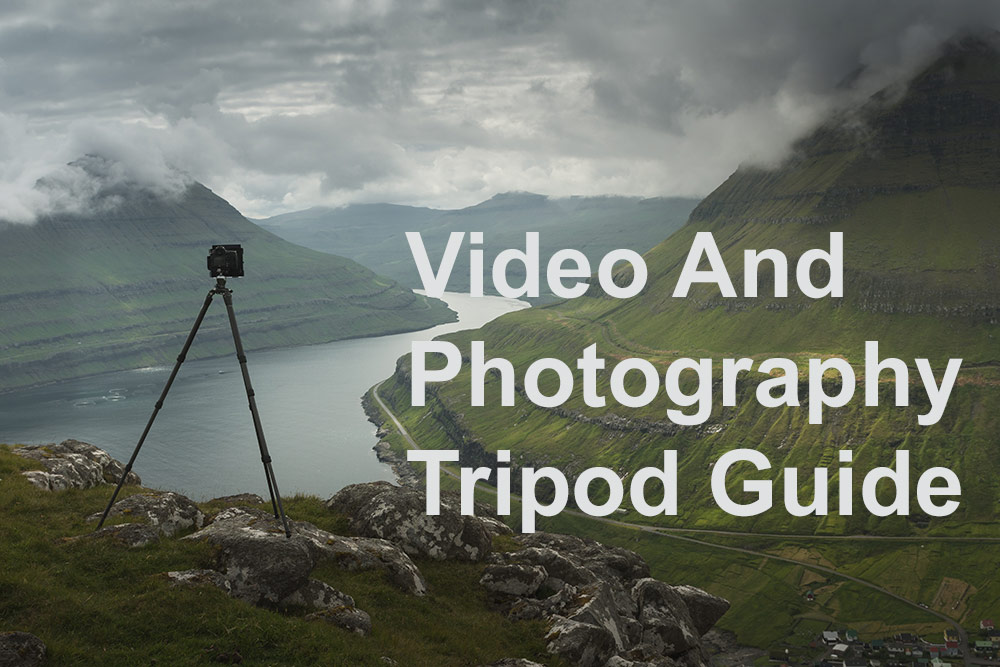
Are All Tripods the Same?
There are countless variations between the tripods available. As with all photography equipment, tripods are designed with specific features for particular subjects and genres. The number of leg sections a tripod has determines both its height and stability. Most mini tripods only have one leg-section, whereas the tallest models (including monopods) have up to five leg-sections. The ways the legs are tightened varies too, with twist or lever locking mechanisms, as well as the material used to make them - either aluminium or carbon fibre.
It’s essential to understand the difference between tripod heads too, as these are designed to cater to the genre of photography. The head requires a compatible tripod plate, which provides the camera attachment. Many tripods come in a kit with everything you need, but other options are legs-only, allowing you to choose the best head and accessories for your needs.
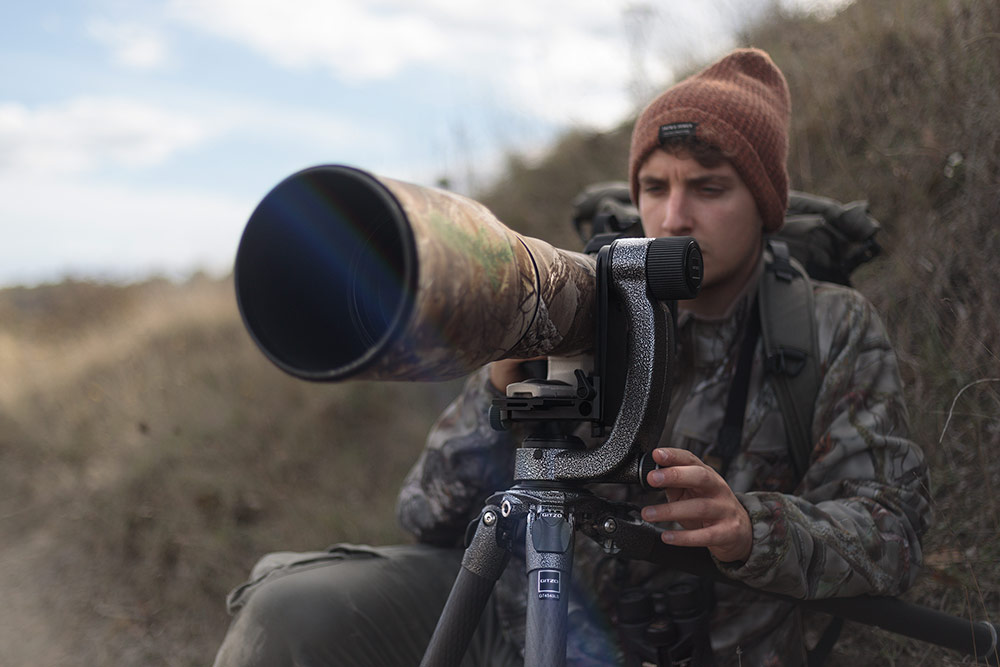
Gimbal head, suited to long telephoto lenses
Are Camera Tripods Universal?
Yes - any tripod kit is universal and will fit virtually all mirrorless cameras, DSLR’s, camcorders and even the majority of compact cameras. To be 100% sure your camera will connect to a tripod, check for a round threaded hole in the base of the camera body, which is where the plate is screwed into the camera.
Bear in mind that although tripods will fit most cameras, they aren’t always the right fit for the type of photography you have in mind. Buying a bulky tripod if you travel a lot wouldn’t be appropriate. It’s also important to ensure that your camera equipment doesn’t surpass the maximum payload the tripod can safely withstand.
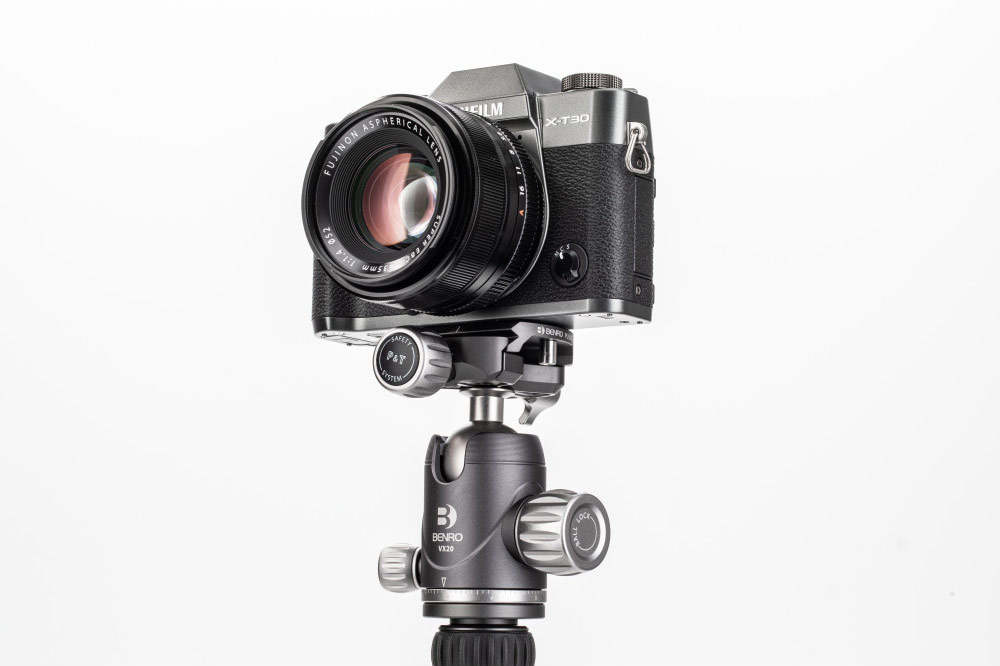
What Camera Tripod Should I Buy?
When you’re choosing your tripod, consider the photography you’ll be using it for! Also check its fully extended height, as regular use of a short tripod can cause back problems for tall users. If you’re planning to travel with it, make sure it’s lightweight and whether it can be stored in your backpack.
Long-term durability and reliability are worth researching, as well as the availability of spare parts. You might require advanced features, like removable legs or interchangeable feet for different terrains, or attachable LED lights, microphones and other accessories to use for filming. It’s a lot to consider, so starting with photography genre and going from there is your best bet.
Tripods for Night Photography Including Astro, Stars and Milky Way
Night photography typically requires a tripod - capturing the moon, stars, Milky Way and the aurora is demanding! Even with the very best camera and lens stabilisation systems, a tripod is essential to steady the camera for several seconds or minutes.
A heavyweight, extra-sturdy set of legs are often considered the best choice for night photography, to ensure stability. If hiking, consider a lighter model with fewer leg sections, like the Manfrotto MT055CXPRO3 055 3 Section Carbon Fibre Tripod. At 2kg, it’s a good compromise for long distance hikes, offering a steady platform on 3-section rigid legs and low vibration support for loads up to 9kg.
The Benro Rhino Carbon Fibre Three Series Travel Tripod with VX30 Head is similarly lightweight, including a strong dual panoramic ball head. Lighter again, Peak Design’s Aluminium Travel Tripod is 1.5kg but offers an extremely stable platform for up to 9.1kg of equipment.
The Best Camera Tripod for Aviation Photography
The tripod head is a crucial factor in successful aviation photography. It should be quick to use, pan smoothly and change directions rapidly. A long telephoto lens is ideal for capturing avian life, so the Benro GH2 Aluminium Gimbal Head makes a great choice. Alternatively, the Manfrotto 496 Compact Ball Head is a more versatile option, suitable for aviation photography and beyond. As weight is a lesser concern for aviation photography, the Manfrotto MT290XTA3 290 Xtra Aluminium Tripod makes a solid choice.

Camera Tripod for Landscape Photography
Landscape is one of the most popular photography genres requiring the stability of a tripod. Images usually need the greatest depth of field possible at the lowest ISO’s, meaning many landscape shots will be taken at shutter speeds too slow to handhold.
Landscape also encompasses long exposure photography, where a remote shutter release is essential to photographers taking panoramic shots. The ability to pan the tripod head without vibrating the camera equipment is important to ensure sharp results.
Choosing the perfect set-up comes down to whether you need to travel, in which case a lighter system would be preferable. For drive-by landscapes, a tall, sturdy tripod is best for stability and range. For landscape photographers with two tripods, an interchangeable ball head can be swapped between the lighter or heavier legs as required.
Despite the extra cost, carbon fibre tripods are extremely popular with landscape photographers due to their lightweight nature. Particularly compact models such as the popular Peak Design Travel Tripod in Carbon Fibre are easily-transported, whilst the Manfrotto MT290XTC3 290 Xtra Carbon Fibre Tripod has a good payload-to-weight ratio, extends and allows you the freedom to choose a separate head.
Gitzo tripods are often considered the unrivalled option for serious landscape photographers who shoot in all conditions. Both the Gitzo GT3542 Mountaineer Series 3, 4-Section Carbon Fibre Tripod and GT5533S Systematic Series 5, 3-Section Carbon Tripod are well-suited to long exposures and wide panoramas as they’re highly rigid, stable and extremely durable models. The Series 4 Centre Ball Head with Screw Knob is perfect for any Gitzo legs, with a heavier camera/lens set-up.
Gitzo Mountaineer Tripod Hands-On First Look Video
Ball heads are commonly used for landscape because of their compact size and light weight. They allow for quick, easy compositional changes as they rotate, whilst also being able to pan through 360º. The two main locking mechanisms for ball heads are lever locks and screw-type knobs. Levers release the camera more quickly, whereas screw-knobs can be safer from accidental release.
The Manfrotto XPRO Ball Head With Top Lock Plate is quick to use and versatile, whereas the Benro GD3WH Precision Geared Tripod Head facilitates more accurate composition through micro-adjustments; great for still life, architecture and interiors photography.
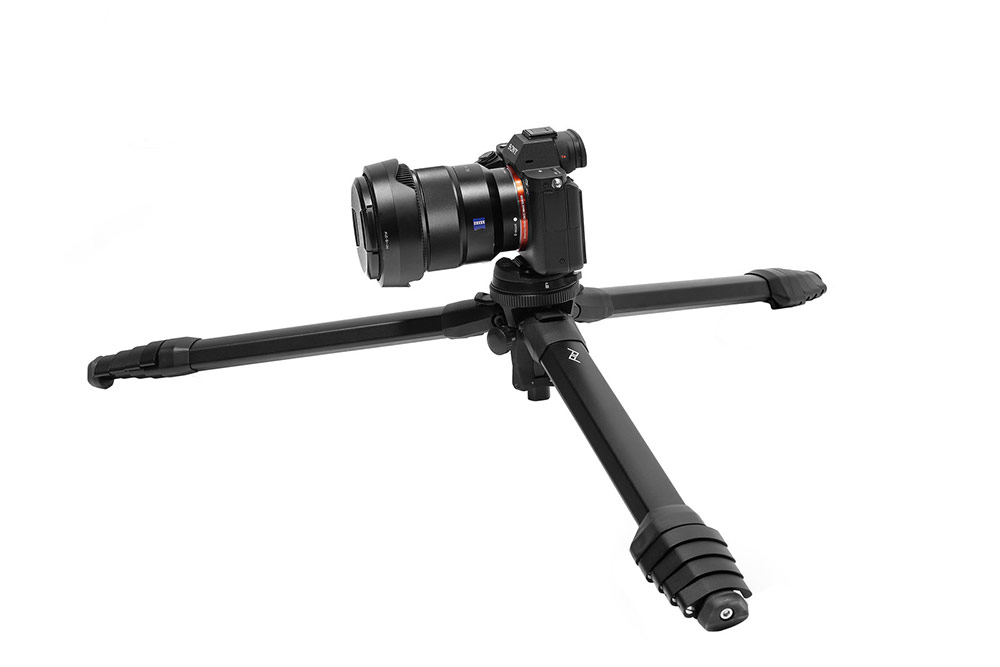
Getting the tripod low to the ground is ideal for some type of macro photography
Tripods for Macro Photography
For close-ups and macro photography, a rigid tripod able to reach low to the ground is preferable. The tiniest movement will ruin a macro shot, making leg stability particularly important.
One of the most versatile all-round tripods is the 3 Legged Thing Punks Brian 2.0 With Airhed Neo 2.0 Black, which comes with a ball head, supports up to 30kg, reaches as low as 10.6cm via removable and reversible legs, and can also be used as a monopod or boom poles.
The Manfrotto 055 carbon fibre 4-section tripod features an innovative 90º centre column, allowing for vertical or horizontal extension. It’s also surprisingly sturdy for such a lightweight platform, weighing just 2.1kg.
Manfrotto MT055 Series Hands-On First Look Video
Meticulous compositions are key to macro photography, which means choosing a suitable head for the style you’re shooting. Advanced macro photographers might opt for a slow-working, but extremely precise option like the Manfrotto 405 Geared Tripod Head, whereas the more versatile Vanguard Alta BH-300 Ball Head is better-suited to newcomers for general use. The Vanguard has a huge 30kg payload and rotates smoothly through 360º, yet manages to remain competitively priced.
The Best Tripod for Fashion Photography
Choosing the best tripod for fashion photography, including portraiture, largely depends on if you work in the studio or on-location. Whilst handholding the camera allows for free-flowing shooting, a tripod adds the necessary stability for crucial shots, intricate lighting set-ups and studio work.
For studio photography, a good option is the Manfrotto MK055XPRO3-BHQ2 055 3 Section Aluminium Tripod with XPRO Ball Head. A solid, very stable model which extends to 181.5cm and offers quick framing adjustment. The Manfrotto Easy Link system allows you to mount reflectors and other Manfrotto studio accessories onto the legs, facilitating better lighting.
The Benro Mach3 Series 4 Carbon Fibre Tripod is more suitable for location photography. Reaching a huge 210.6cm, it’s ideal for top-down fashion shots and shooting on slopes. Weighing 2.6kg, it’s relatively lightweight for such a stable option.
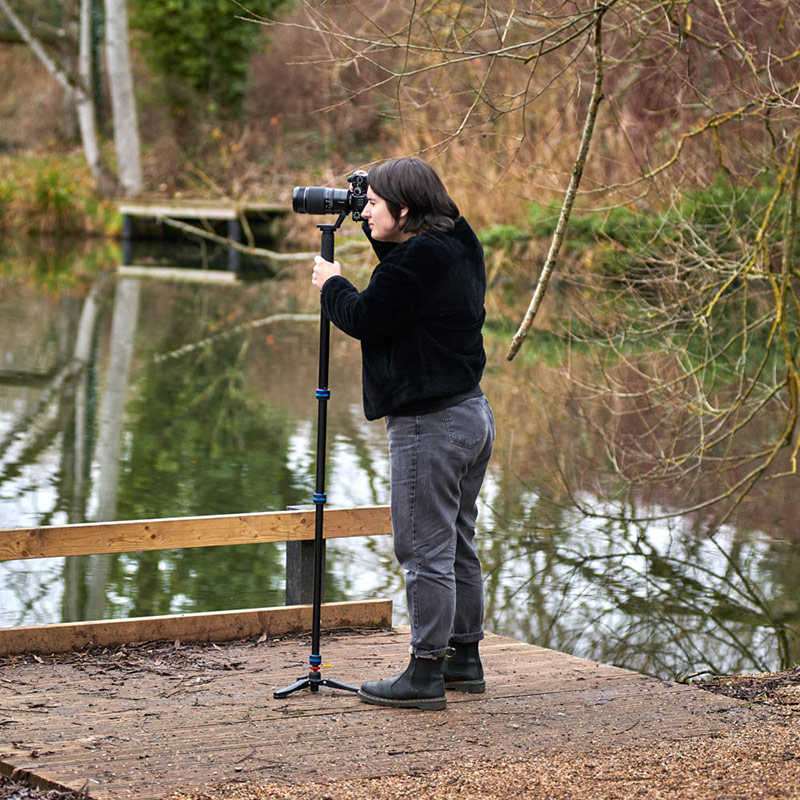
Tripods for Sports Photographers
The vast majority of sports photographers prefer a monopod to a tripod, as they allow them to track fast-moving action fluidly. They’re also lighter, take up less floor-space and balance portability with stability.
There are a number of excellent options for budding sports photographers, including the tried-and-tested Gitzo GM4552L Series 4 Monopod, which offers a number of advanced features, including an integrated pivot foot and 190cm reach. The Benro SupaDupa PRO Monopod is a worthy alternative, delivering swift movements thanks to an inbuilt levelling pan head, weighing just 0.9kg and extending to 158cm.
Our third recommendation is the 3 Legged Thing Trent 2.0 Monopod. Whilst it weighs slightly more (1.2 kg), it has a huge 2m reach; perfect for shooting over crowds or obstacles. There’s also a clever smooth rotation stabiliser foot, providing a sturdy, quick-panning platform.
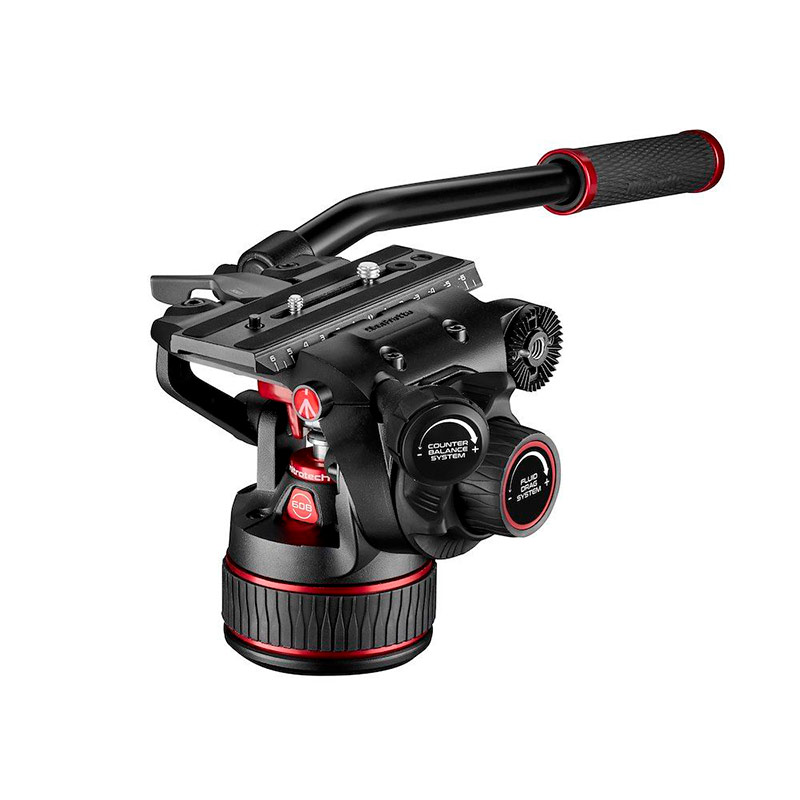
Manfrotto video head showing panning arm and other video features
The Best Video Tripods
Videographers have their own category of specialist video tripods with fluid heads made for video capture. Recording footage in a studio allows you to choose a sturdier model, while location shoots lend themselves to lighter models.
Manfrotto XPRO 3-Way Head Hands-On First Look Video
Choosing the right video head is equally important, with some video heads including a damping mechanism for extra smooth panning, or flat bases for additional stability. Double check payloads if you’ll be working with specialist video cameras and heavier Cine lenses, to ensure they’ll be secure.
The more stable video tripods often include twin legs with leg spreaders. One of the most popular models is the all-in-one Benro Aluminium Twin Leg Video Tripod, which comes with a large 10cm head, counterbalance system and independent 4-step pan and tilt drag.
The 3 Legged Thing Legends Nicky Hybrid Tripod combines advanced features, perfect for hybrid photographers. It comes with a half bowl and flat base and supports up to 60kg payloads. Like many 3 Legged Thing tripods, the Nicky converts to monopod, boom poles and a table-top tripod for close-ups and product videos.
Designed for videography, the Benro A673TM Video Tripod is an extremely stable, all-in-one solution with a mid-level spreader, counterbalance system and the excellent S8 PRO Video Head, which can also be purchased separately.
Now you know which features to look out for, it’s time to find your perfect tripod from our huge range. Whatever photography you specialise in, we’ve got you covered. Explore our extensive range today to start capturing your sharpest shots ever
Share this post:
By Park Cameras on 07/02/2022

Trade in your old equipment
Fast and easy trade in service ensures your old gear is collected efficiently and you are paid quickly! It's very simple to trade in your unwanted photography gear. Just head over to our dedicated Sell or Part Exchange page, fill out the details, and we'll get back to you with an offer for your old gear. Take the cash, or put it towards the cost of your new gear. It's up to you! Find out more
sign up to the newsletter
Keep up to date on the latest photography news, events and offers. Sign up now